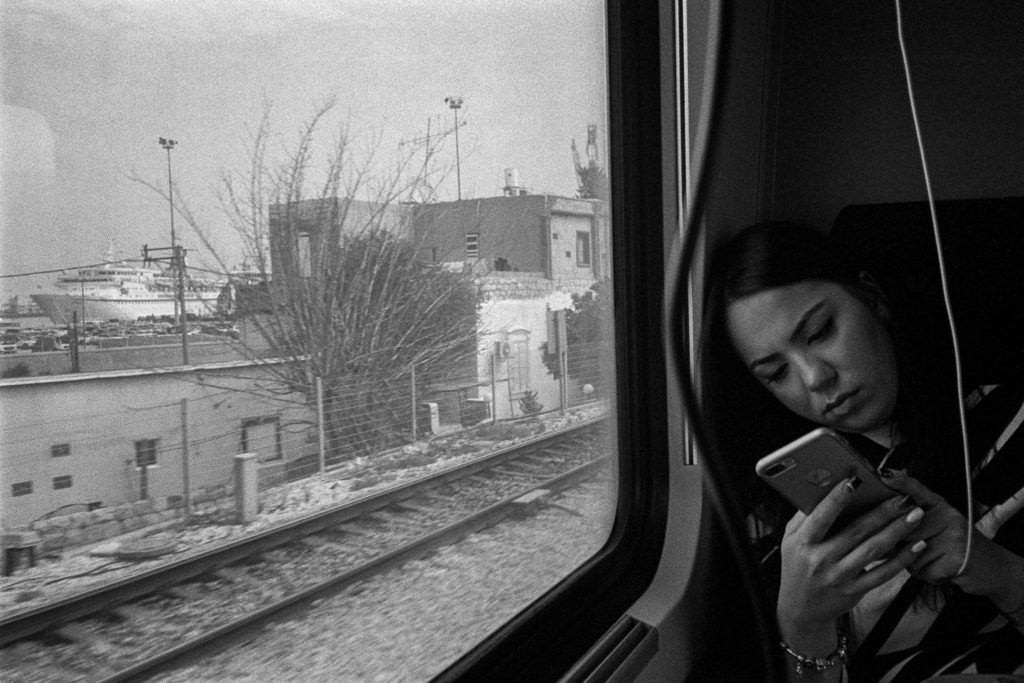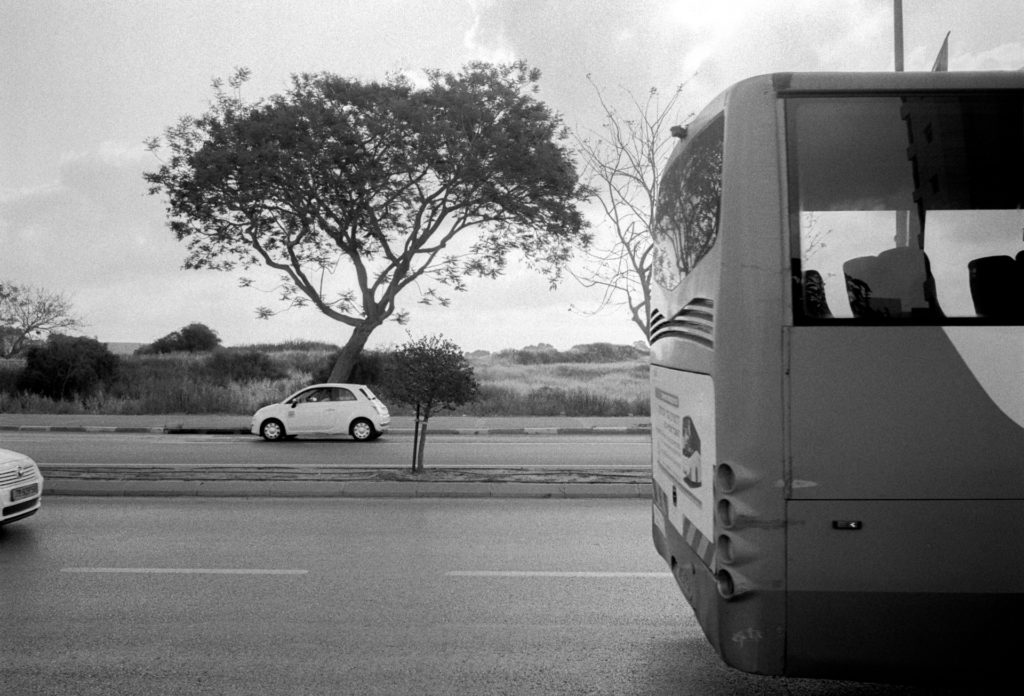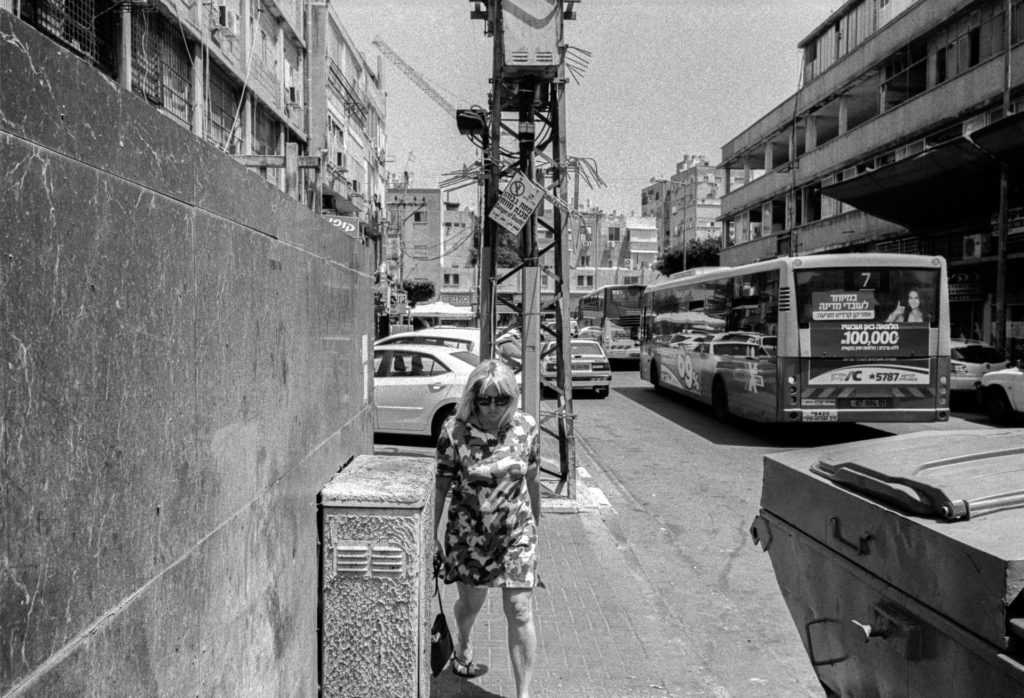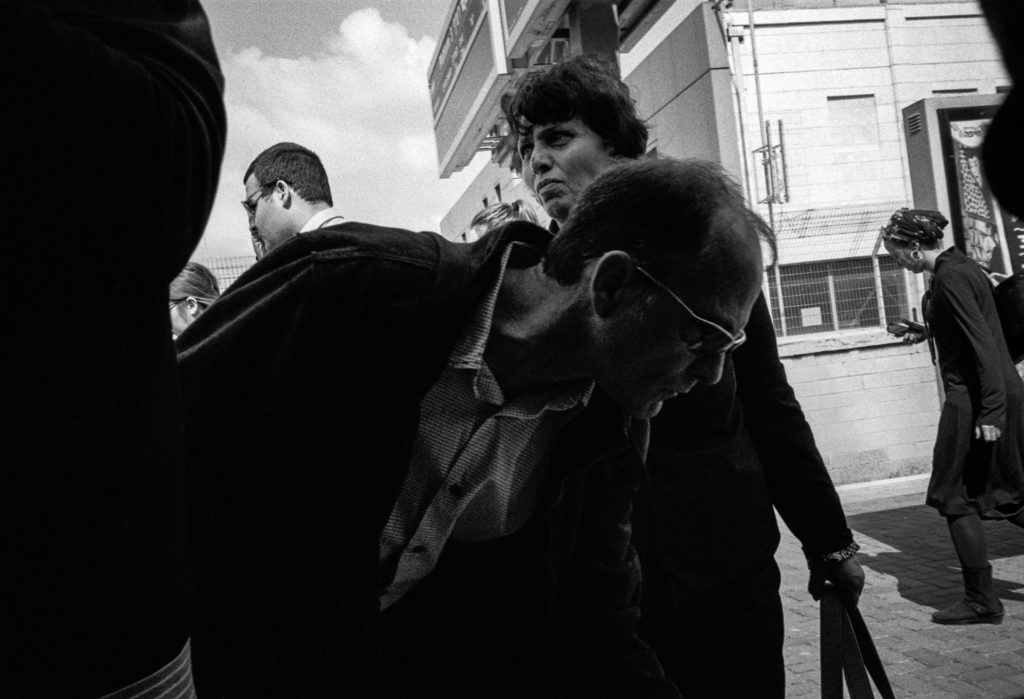The photographs in this series try to present intimate portraits of strangers in the public space as they go about their business, uninterrupted. In a way, the images document the failure, perhaps the impossibility, of such a task.
The “public” space is by definition a shared environment. And yet an alien landing on earth might be puzzled by how guarded humans are most of the time—sharing the space yet sharing so little of themselves. “Passers-by” go on with their mysterious lives (are they banal? possibly, but we’ll never know); transportation “users” acknowledge the presence of others just enough to not bump into them (most of the time). Eye contact is the exception, not the norm. Many have perfected the art of sharing nothing more than the space itself, sometimes holding their breath for fear of letting in the air that just came out of someone else’s lungs.
Who are each and every one of these human beings? Where do they come from? Where are they going? The age-old questions remain unanswered. Ants will touch antennas as if their life depended on it, dogs will enthusiastically sniff at one another (or at the photographer). But humans have developed the rare ability to share the same environment with only minimal acknowledgment of other members of the species, giving away nothing but the inscrutable mask they wear for strangers. Even in Israeli society, which is considered close-knit compared to many countries, it often feels as if one walked along invisible walls that block access to the private persons brushing past us. Galaxies missing one another by a millions light years might not be further apart.
And yet here was an attempt, doomed to failure, at being the proverbial “fly” on these walls—at catching, in a Winogrand-like disappearing act, a glimpse of the worlds of thoughts, feelings, fears, dreams and desires denied to us, behind the private facades of people’s faces. The space may be public and shared, but the human traces left in the continuum of the world—and on film—remain radically opaque.





























